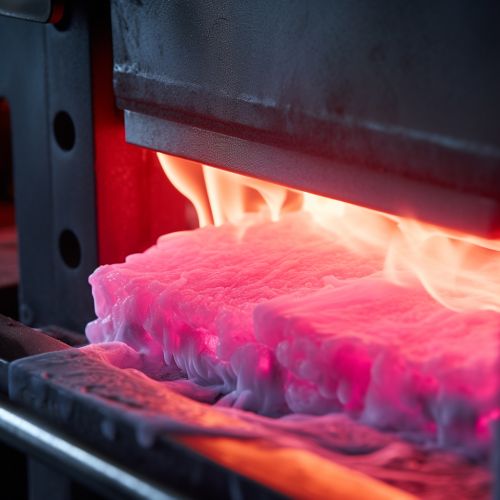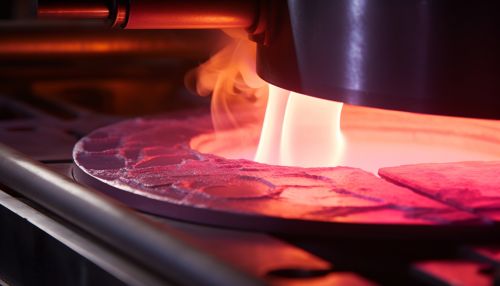Conduction
Introduction
Conduction is a fundamental concept in the field of physics, specifically within the study of thermodynamics. It refers to the transfer of energy, particularly heat or electricity, through a substance. In the process of conduction, energy is transferred from more energetic particles of a substance to adjacent particles with less energy. This transfer occurs due to collisions between particles and the movement of electrons within the substance.
Mechanism of Conduction
The mechanism of conduction is based on the kinetic theory of matter, which postulates that all matter is composed of tiny particles that are in constant motion. In the case of solids, these particles are atoms or molecules that are closely packed together and vibrate about their mean positions. When a solid is heated at one end, the particles at that end start to vibrate more rapidly. This increased kinetic energy is then transferred to the adjacent particles through collisions, a process that continues throughout the solid, causing the energy to be transferred from the hot end to the cold end.


In liquids and gases, the process of conduction is somewhat different. Here, the particles are free to move about, and when a region of the liquid or gas is heated, the particles in that region gain kinetic energy and start moving more rapidly. This movement brings them into contact with other particles, to which they transfer some of their energy. This process continues, causing the energy to be spread throughout the liquid or gas.
Conductivity
The rate at which energy is conducted through a substance is determined by the substance's conductivity. In the context of heat conduction, this property is referred to as thermal conductivity, while in the context of electrical conduction, it is referred to as electrical conductivity.
Thermal conductivity is a measure of a material's ability to conduct heat. It is denoted by the symbol 'k' and is measured in watts per meter-kelvin (W/m·K). Materials with high thermal conductivity, such as metals, are good conductors of heat, while those with low thermal conductivity, such as wood or rubber, are poor conductors or insulators.
Electrical conductivity, on the other hand, is a measure of a material's ability to conduct electric current. It is denoted by the symbol 'σ' and is measured in siemens per meter (S/m). Materials with high electrical conductivity, such as copper or silver, are good conductors of electricity, while those with low electrical conductivity, such as glass or plastic, are poor conductors or insulators.
Factors Affecting Conduction
Several factors can affect the rate of conduction, including the nature of the material, its temperature, its state (solid, liquid, or gas), and its dimensions.
The nature of the material is perhaps the most significant factor. As mentioned earlier, metals are good conductors of both heat and electricity due to the presence of free electrons in their atomic structure. These electrons can move freely within the metal, allowing energy to be transferred rapidly.
The temperature of a substance also affects its conductivity. In general, the higher the temperature, the more kinetic energy the particles of the substance have, and thus the faster they can transfer this energy to other particles.
The state of a substance can also affect its conductivity. In general, solids are better conductors than liquids, and liquids are better conductors than gases. This is because the particles in solids are closely packed together, allowing energy to be transferred more quickly.
Finally, the dimensions of a substance can affect the rate of conduction. In general, the larger the surface area of the substance in contact with the heat or electricity source, the faster the rate of conduction. Similarly, the shorter the distance the heat or electricity has to travel, the faster the rate of conduction.
Applications of Conduction
Conduction plays a crucial role in many areas of everyday life and in various industries.
In the field of construction, understanding the principles of conduction is essential for designing buildings that are energy efficient. For instance, materials with low thermal conductivity are used for insulation to prevent heat loss.
In the field of electronics, conduction is the primary method of transferring electric current. Electronic devices, such as computers and televisions, rely on the conduction of electricity through their internal circuits to function.
In the field of cooking, conduction is the primary method of heat transfer. When a pot or pan is placed on a stove, the heat from the stove is conducted through the pot or pan to the food, causing it to cook.
